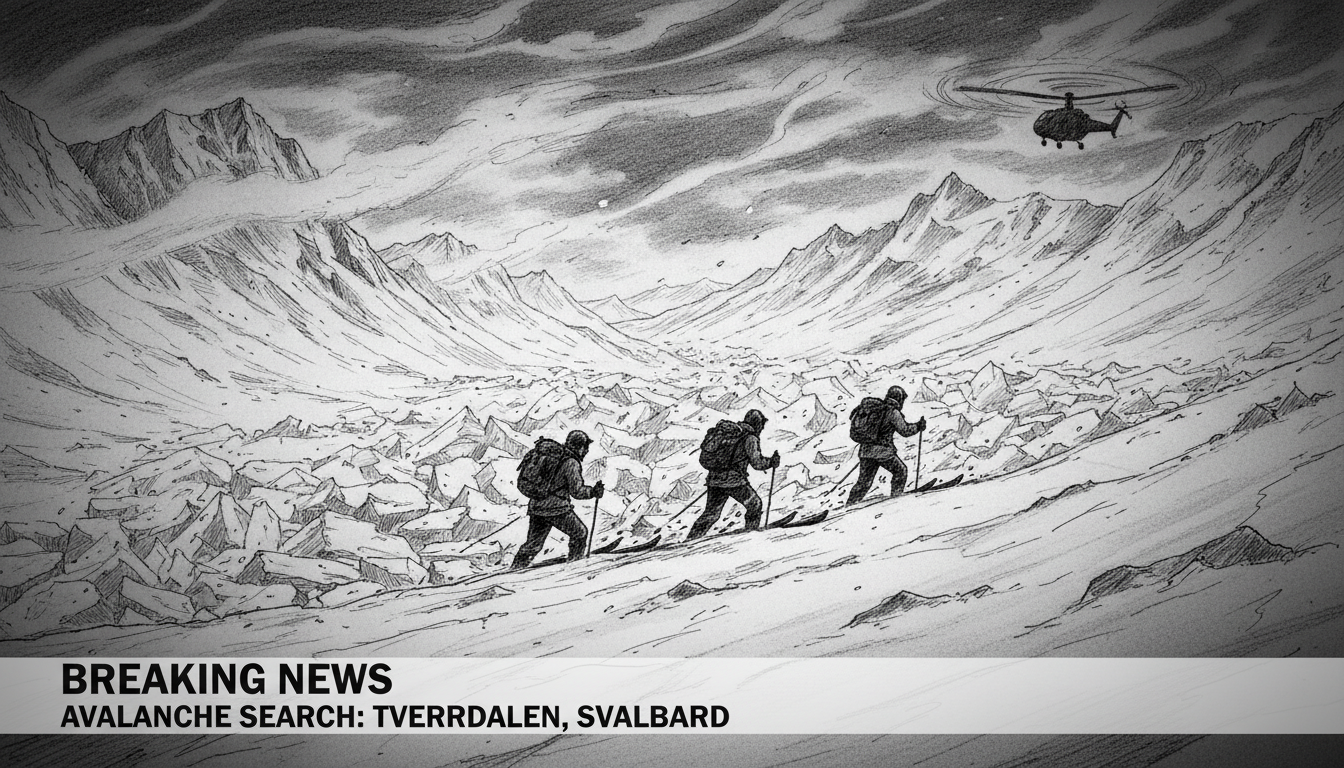Norwegian authorities have launched a major search operation following reports of an avalanche in Svalbard's Tverrdalen valley. The search involves all available emergency resources after initial reports came in at 4:10 PM local time.
Police confirm they have deployed every available resource to the remote Arctic location. The Sysselmesteren office, fire department, Red Cross, and Norwegian rescue dog teams are all participating in the operation. Rescue crews from Longyearbyen Red Cross reached the avalanche site by 5:45 PM.
Officials state no one has been reported missing at this time. They cannot confirm whether anyone was caught in the avalanche, but they also cannot rule out the possibility. Search teams have observed tracks on both sides of the avalanche path, adding complexity to their assessment.
Police are now requesting information from anyone who has been hiking in the Tverrdalen area recently. This call for public assistance represents a standard procedure in such remote area incidents where comprehensive information is often limited.
Weather conditions present significant challenges for rescue teams. The region is experiencing strong winds, with measurements showing 11 meters per second at Svalbard Airport and even stronger gusts reaching 23.7 meters per second at Platåberget. Fresh snowfall has also accumulated over the past 24 hours, creating additional avalanche risks.
Svalbard's unique geography makes avalanche incidents particularly dangerous. The archipelago sits well above the Arctic Circle and features mountainous terrain that accumulates substantial snow throughout the long winter. Local authorities maintain sophisticated avalanche monitoring systems, but the extreme environment creates inherent risks for residents and visitors.
This incident highlights the ongoing safety challenges in Norway's Arctic territories. Svalbard hosts both permanent residents and numerous researchers and tourists who engage in outdoor activities despite the harsh conditions. The Norwegian government maintains extensive emergency response capabilities in the region, recognizing the special demands of Arctic operations.
The search operation continues as daylight conditions permit. Svalbard experiences polar night during winter months, creating limited windows for effective search operations. Rescue teams must balance thoroughness with safety considerations given the ongoing weather challenges and potential for additional avalanche activity.
Norwegian avalanche safety protocols are among the world's most advanced, developed through decades of experience in mountainous terrain. The country invests heavily in both prevention measures and emergency response capabilities. This incident serves as a reminder that even with sophisticated systems, Arctic environments remain unpredictable and demanding for both recreation and rescue operations.

